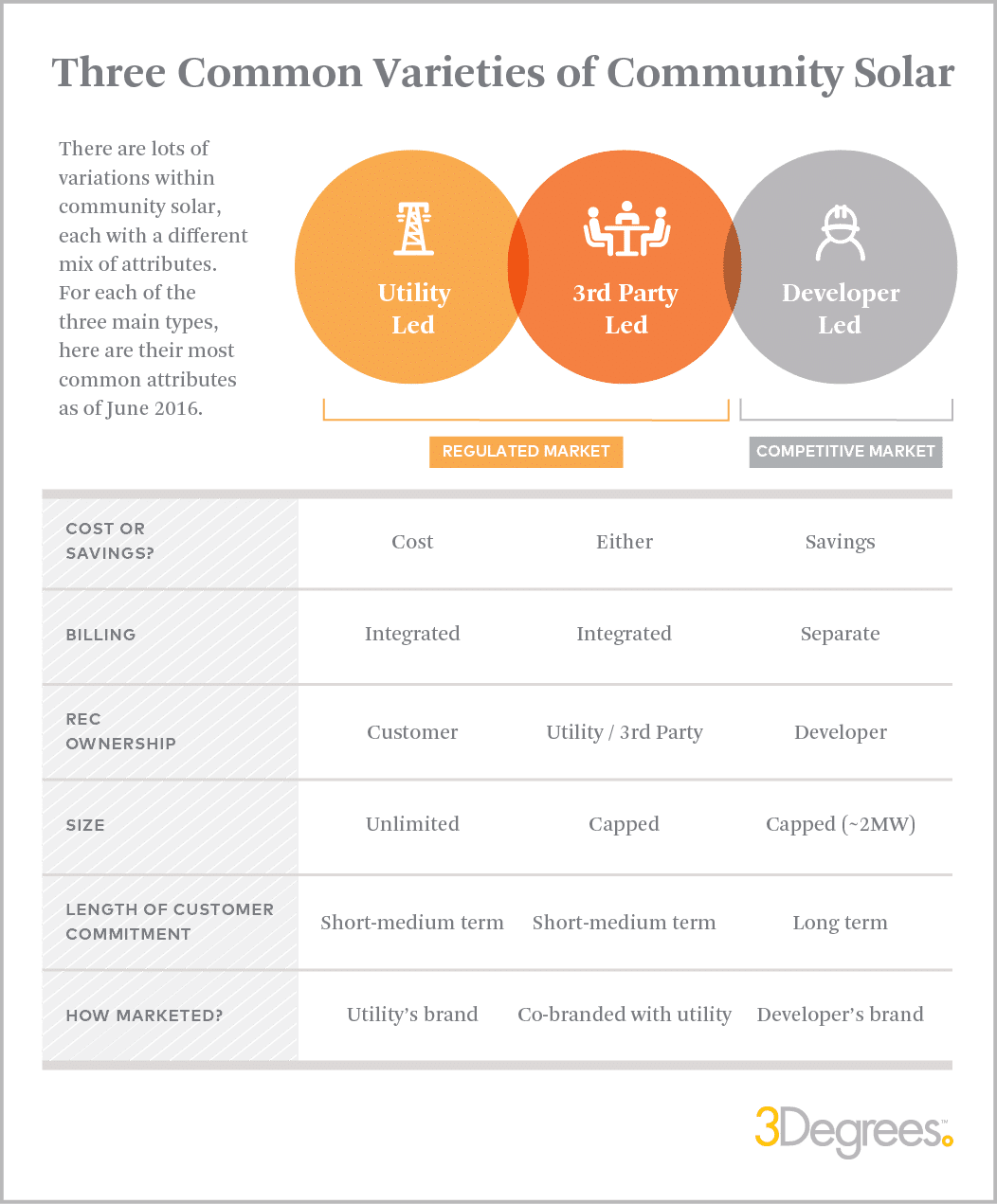Community solar and barbecue: The devil is in the details
Last year, we published a three-part series about community solar as offered by regulated utilities. These articles focused on key program design decisions; many of those discussions are just as relevant now as they were last year. But today I’d like to take the conversation up a level and talk about all the different varieties […]

Last year, we published a three-part series about community solar as offered by regulated utilities. These articles focused on key program design decisions; many of those discussions are just as relevant now as they were last year. But today I’d like to take the conversation up a level and talk about all the different varieties of community solar.
Reports about community solar usually begin with a definition such as this one provided by NREL: “a solar-electric system that provides power and/or financial benefit to multiple community members.” Agreed. But that definition leaves considerable room for various forms of community solar, and I think we’re still collectively struggling to find common language to describe these different types of community solar. Calling all variations of community solar by one generic term is sort of like calling all varieties of barbecue just of “barbecue” with no way to differentiate between North Carolina, Kansas City or Texas barbecue. Although they all have some common elements, there are fundamental differences as well — from ingredients to cooking style to condiments. So too with community solar. In this article, we offer a framework for thinking about the varieties of community solar programs across the country.
The most significant dichotomy in community solar programs is between those offered in regulated versus competitive retail markets. Let’s discuss each of these electricity markets and the varieties of community solar that are offered in each.
Community Solar offerings in regulated markets
In fully regulated utility service territories, there is a single (almost always) vertically integrated utility, serving all customers. Regardless of whether the utility is investor-owned, a municipal or a cooperative, there are a few different types of community solar operating.
Utility-led: In these cases the utility has decided to offer community solar to customers on its own, and in most of these cases, the utility has made a policy decision (or been directed by their commission) to ensure that program participants cover the full cost of offering the program. In practice, this often means that the community solar is offered at a price premium, and that energy price is fixed for the time the customer stays in the program. Customers can usually make renewable energy claims (because they keep the REC). Examples include Rocky Mountain Power and Consumers Energy.
Third-party-led: In this model, some sort of legislative or regulatory intervention creates a market for private companies to offer community solar within a utility’s service territory. In these instances, the utility typically pays either a full retail rate or something close to it for the energy from the system, and the third party is then able to offer solar power to customers at a savings to traditional utility rates. In return, the utility is able to use the RECs to meet RPS requirements. Colorado is a poster child for this structure, and it’s where community solar first gained real traction in the market.
All of the above: Until last month, California was an outlier with legislation that mandated that the regulated utilities offer community solar and created the framework for third-party community solar providers to acquire and service customers in the utilities’ service territories. In April of this year, Oregon joined California, passing legislation directing the Public Utility Commission to finalize rules that will allow the regulated utilities to offer community solar programs while also allowing third parties to provide community solar to customers of the regulated utility. As one would expect, the relative success of these programs in both states will be defined by how the final rules are structured — the higher the rate for energy provided to the solar facility, the more successful the program will likely be.
Community solar in competitive markets
For those of you who spend all your time in the western or southern U.S., it’s easy to forget that retail competition (with varying levels of actual competition) is alive and well in many states in the Northeast, a few states in the Midwest, and in Texas. In these competitive markets, there is a distribution utility that sends out monthly bills and acts as a default provider, but customers can buy energy from a number of retail providers. Community solar is an interesting new option in this world. But, it is important to note, currently it only works when there is an incentive for the solar that makes it price-competitive. With rapidly falling solar prices, this will surely change in coming years, but for now, the vast majority of capacity installed for community solar products in competitive states receive energy payments well above rates paid to other energy resources.
There are two common ways to provide an incentive for community solar developers. One is to allow developers to pass through net metering credits to end-use customers. These credits are often valued at the full retail rate for every kilowatt-hour of energy generated. A second option is to agree on the value of solar provided to the grid by the system and then compensate community solar developers at this rate. The value of solar is a rate negotiated with state regulators; not surprisingly, the higher it is, the more appealing community solar is to potential buyers. In both cases, the developer is most likely selling the REC to someone else so the customer is not receiving the renewable energy attributes of the electricity produced. These products are predicated on providing a financial benefit to customers, rather than solar energy.
Community solar has many variations. Some programs are granted sizable incentives, some are not. Some are small, some are relatively large. Some transfer the renewable energy attributes to the customer, some do not. Depending on the details of each program, customer interest and acquisition costs can vary widely. And just like good barbecue, the details (or ingredients) matter — especially when we review case studies and best practices and seek to apply lessons learned from one program to another. As the market matures, we should get more specific with our language so that when we are comparing programs, we’re talking about the same type of community solar.

Originally published on GreenTechMedia
More on 3Degrees + Community Solar
